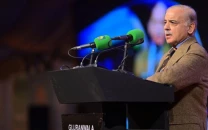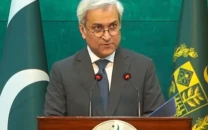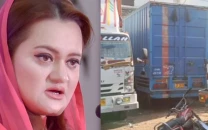Constitutional status in limbo: Whoever wins, little will change for G-B’s two million residents
Almost all contesting parties fail to reflect local aspirations

In G-B elections almost all contesting parties fail to reflect local aspirations. PHOTO: AFP
With all its stated benefits of political transition from an exclusionary and centralised rule to a democratic, inclusive and self-governed political dispensation, the political reality remains unchanged.
In representative democracy of modern polity, elections are the instruments to enable people to exercise their rights as citizens to claim political, economic, cultural and legal entitlements to participate in the policy making, and to ensure equitable distribution of resources and civic amenities. The process is governed by some overarching constitutional, legal and political principles that evolve their public participation and representation of citizens.

With no constitutional cover and legal backing, the pseudo-provincial status granted through a presidential order, the new arrangement fails to provide internal autonomy and ensuring fundamental citizen rights to the two million people of the region.
Most of the powers still rest with the Ministry for Kashmir and Gilgit-Baltistan and GB Council. The Prime Minister is the chairman of the GB Council with four federal ministers and four locally elected representatives as its members.
Devoid of a well-defined political, legal and constitutional status, the local assembly has essentially become a toothless dormant forum whose control lies with a strong administrative machinery of state. It has no powers even to move a ‘no-confidence motion’ against the chief minister.

For over 67 years, the bureaucracy ruling G-B has been treating the region as a virtual colony, denying its people internal autonomy and control over their resources. This has aggravated the sense of deprivation among the people, especially the young generation.
Round and round
Many independent experts say that this election will bring little change to the life of the people.
Of the mainstream parties, none has the programme and commitment to address some of the major issues such as constitutional and political status of G-B, rising unemployment, poverty that is fuelling the sectarian discord in the region, energy crisis, boundary disputes between Khyber-Pakhtunkhwa and ecological challenges, especially the impact of China-Pakistan Economic Corridor on the environment of the fragile mountain region.

The fate of G-B has remained tied to the resolution of the Kashmir dispute. Unless the issue is settled, one should not expect any real change in the status of the region. Even the region is not enjoying the limited autonomy given to Azad Jammu and Kashmir.
Although half a dozen political parties were in the electoral fray, a tough contest was witnessed between four parties: PML-N, Pakistan Peoples Party, Pakistan Tehreek-e-Insaf (PTI) and Majlis-e-Wahdatul Muslimeen (MWM).
The PPP had been a popular party in the region since 1970s when then Prime Minister Zulfikar Ali Bhutto introduced political and administrative reforms abolishing the Frontier Crimes Regulation. However, this time around the party is facing strong challenges from opponents and may face a massive erosion in its vote bank partly because of bad governance, rampant corruption and nepotism by former chief minister Mehdi Shah-led government during its five-year rule and partly because of internal rifts and lack of a young robust leadership and vision.
Two new parties — PTI and MWM — are participating in the elections but are unlikely to make any major upset. A leftwing party, Awami Workers Party (AWP), though fielded candidate only in one constituency -- GBLA-6 Hunza -- its candidate, Baba Jan, who is fighting elections from behind bars, inspired youth of the region who thronged the valley in big numbers and ran his campaign, introducing a new political tradition — contesting elections without spending a huge amount and breaking the monopoly of the moneyed class. .
Observers foresee a hung parliament with PML-N emerging as the largest party followed by PPP and MWM making a coalition government.
Published in The Express Tribune, June 9th, 2015.


















COMMENTS
Comments are moderated and generally will be posted if they are on-topic and not abusive.
For more information, please see our Comments FAQ